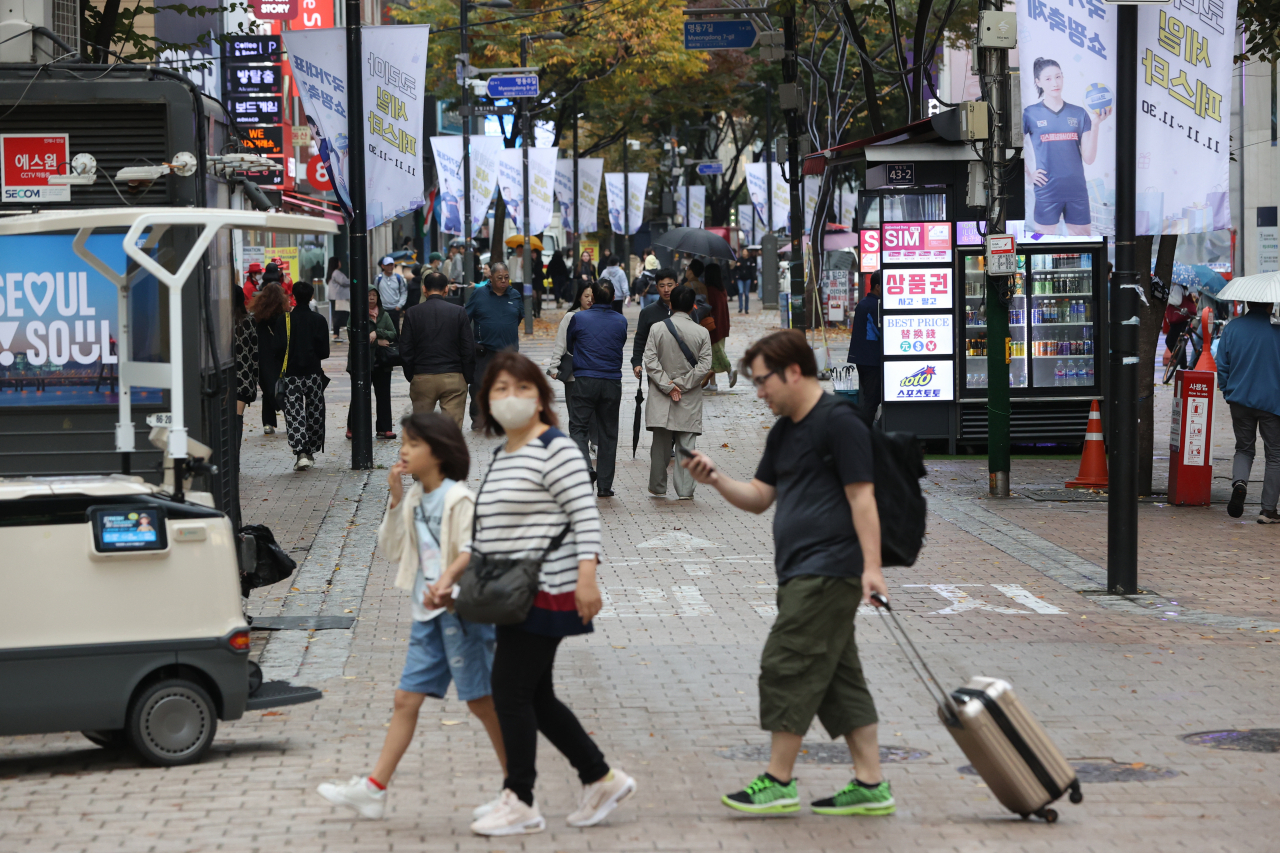SEOUL (ANN/THE KOREA HERALD) – South Korea’s tourism and retail sectors have traditionally relied on Chinese tourists, particularly those traveling in tour groups.
The lifting of China’s travel ban on group tours in August sparked high expectations for a resurgence in Chinese visitors, known for their significant spending.
However, after three months, there is little sign of the so-called “Chinese spending boom.”
Experts say that over the past years, Chinese people have embraced more diverse travel and spending patterns, urging Korean retailers to reshape their business strategies and ultimately reduce their dependence on Chinese travelers.
“Following the end of the COVID-19 era, Chinese travelers are showing a preference for taking individual trips that focus on experiencing Korean culture, such as by visiting local restaurants and traveling the countryside, instead of touring famous shopping districts and sightseeing sites,” said Kim Mi-jeong, a researcher at Korea Small Business Institute, in her recent report.

Such change in traveling trends is mainly due to the Chinese “MZ generation,” or millennials and Generation Z born between the early 1980s to early 2010s, who make up the majority of Chinese travelers visiting Korea, according to Kim.
According to Korea Tourism Organisation’s Data Lab, out of some 1.05 million Chinese tourists who visited Korea from January to August this year, people in their 20s and 30s made up almost 60 per cent.
“There is a rise in trend to take so-called pilgrimage trips, or trips that allow one to check out one’s favourite stars or dramas. Along with increase in popularity for K-culture, young Chinese individuals are progressively traveling with clear motives and interests,” said Lee Hoon, the head of the graduate school of international tourism at Hanyang University.
“Also, individual travelers have continuously been increasing in numbers since the implementation of ‘han han ryeong,’ a Chinese ban on Korean goods. A drop in Chinese group travelers amid a slowdown in the Chinese economy, and a slowed recovery in the air routes connecting China and Korea, which means higher ticket prices, also played a role.”
Such a shift in tourism trends has left Korean businesses who previously capitalised on Chinese group travelers’ spending binge flailing.
In particular, the performance of Korean duty-free and cosmetics industries, which relied heavily on business from Chinese tour groups, dwindled during the third quarter.
Hotel Shilla’s operating profit in the third quarter of this year logged KRW7.7 billion (USD5.9 million), a 71 per cent plunge from the same period last year.
While the company’s hotel sector posted an operating profit of KRW24 billion, the company’s duty-free sector posted an operating loss of KRW16.3 billion, driving down the company’s overall performance.
Some 80 per cent of sales in the Korean duty-free industry are made by foreigners, according to an industry official.

“It is not an overstatement to say that some 90 per cent of these sales are made by Chinese travelers making outbound trips to Korea. One of the tourist demographics with the highest expenditure rate is Chinese group travelers led by ‘daigong,’” said the official on condition of anonymity. Daigong in Korean refers to individuals who bulk purchase Korean goods to sell them back in China.
Korean beauty companies, whose sales also depend largely on Chinese consumers and travelers looking to buy K-beauty products, posted spluttering results, as well.
During the third quarter, Korean beauty giant Amorepacific posted an 8.2 per cent on-year drop in operating profits to KRW17.3 billion, while its crosstown rival, LG Household & Health Care, reported a whopping 32.4 per cent on-year decrease in operating profits to KRW128.5 billion.
Experts say it is necessary for Korean beauty and duty-free businesses to lessen its dependence on Chinese consumers.
“The industry environment is changing. Especially for the beauty business, Chinese consumers no longer find K-beauty products as attractive as before,” said Kim Joo-deok, a professor of the beauty industry department at Sungshin Women’s University.
China’s own beauty products have become a lot cheaper and the quality of Chinese make-up products have risen more than ever, Kim said.
Nationalist consumption is also gaining traction among Chinese consumers in the aftermath of the ban on Korean goods, he added.
“Rather than being swayed by Chinese consumers’ actions, Korean companies will need to diversify its targets to other countries such as the US, Europe and Japan,” he said.


